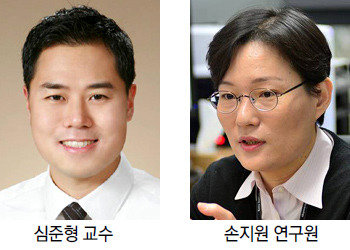Researchers discover 10 times more efficient ceramic fuel cell
Researchers discover 10 times more efficient ceramic fuel cell
Posted February. 24, 2017 07:14,
Updated February. 24, 2017 07:19

The research team headed by Professor Shim Jun-hyeong at Department of Mechanical Engineering of Korea University announced on Thursday that it has developed ceramic fuel cell whose efficiency is enhanced by 10-fold at the maximum compared to the previous one in cooperation with other team headed by Son Ji-won, senior researcher at Korea Institute of Science and Technology (KIST).
Converting fuel into direct electricity in an electrochemical manner, the fuel cell performs best at the temperature of 400-500 degree Celsius. The previous plastic-based fuel cells operate at temperature below 100 degree Celsius as its structure changes at higher temperature. As ceramic-based fuel cells operate at high temperature of 800-900 degree Celsius, however, it was difficult to materialize its optimal performance.
Having developed ceramic-based fuel cells that can operate at 400 degrees Celsius, the research team has overcome the difficult obstacle. The oxygen-ionic electrolyte in the ceramic fuel cell has been replaced with hydrogen-ionic one. With the performance being geometrically decreased at lower temperature, the oxygen ion has its limits to be used for electrolyte.
The team has brought up efficiency by making barium zirconate (BZY), representative material for high conductivity among hydrogen ions, into thin films. The thin-film type better conducts electricity with smaller resistance than the type of bulk.
The ceramic-based fuel cell with new electrolyte type has showed a record-high power output that is 10 times higher than BZY fuel cell at 400 degrees Celsius, meaning that 10 times more electric power can be produced with same amount of fuel.
“With the development of high performance BZY fuel cell, the usage scope of ceramic fuel cell will expand from power plants to households or portable power system,” Professor Shim said.
The research result was published in “Nature Communications” issued on Feb. 23.
yskwon@donga.com







